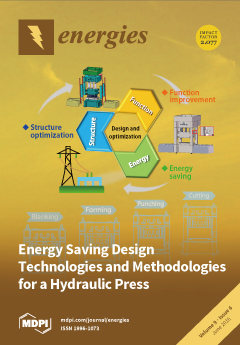The establishment of more severe hydrological environmental constraints, usually as seasonal minimum flows (
ϕ) and maximum ramping rates (
ρ), on hydropower operation is a growing trend. This paper presents a study on the influence of
ϕ and
ρ on
[...] Read more.
The establishment of more severe hydrological environmental constraints, usually as seasonal minimum flows (
ϕ) and maximum ramping rates (
ρ), on hydropower operation is a growing trend. This paper presents a study on the influence of
ϕ and
ρ on the water values (WV) of a real hydropower plant that participates in the Spanish day-ahead electricity market. For this purpose, a
master-slave algorithm, based on stochastic dynamic programming (SDP) and deterministic mixed integer linear programming (DMILP), is used on a real hydropower plant. The
master module, based on SDP, has a yearly planning period with weekly time steps and considers three state variables: stored water volume in the reservoir at the beginning of each week; weekly water inflow; and average weekly energy price. The
slave module, based on DMILP, has a weekly planning period with hourly time steps and considers many features of the hydropower plant operation, such as: start-up costs, evaporation, wear and tear costs,
etc. The results indicate that WV of a hydropower plant are very sensitive to the presence of these constraints;
ϕ especially during the wettest season and
ρ during the driest one. As the severity of
ϕ and
ρ increase, WV increase and decrease, respectively.
Full article





